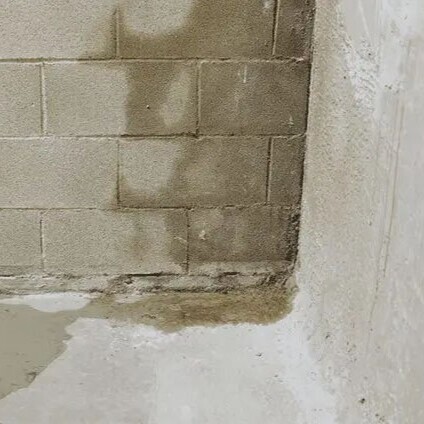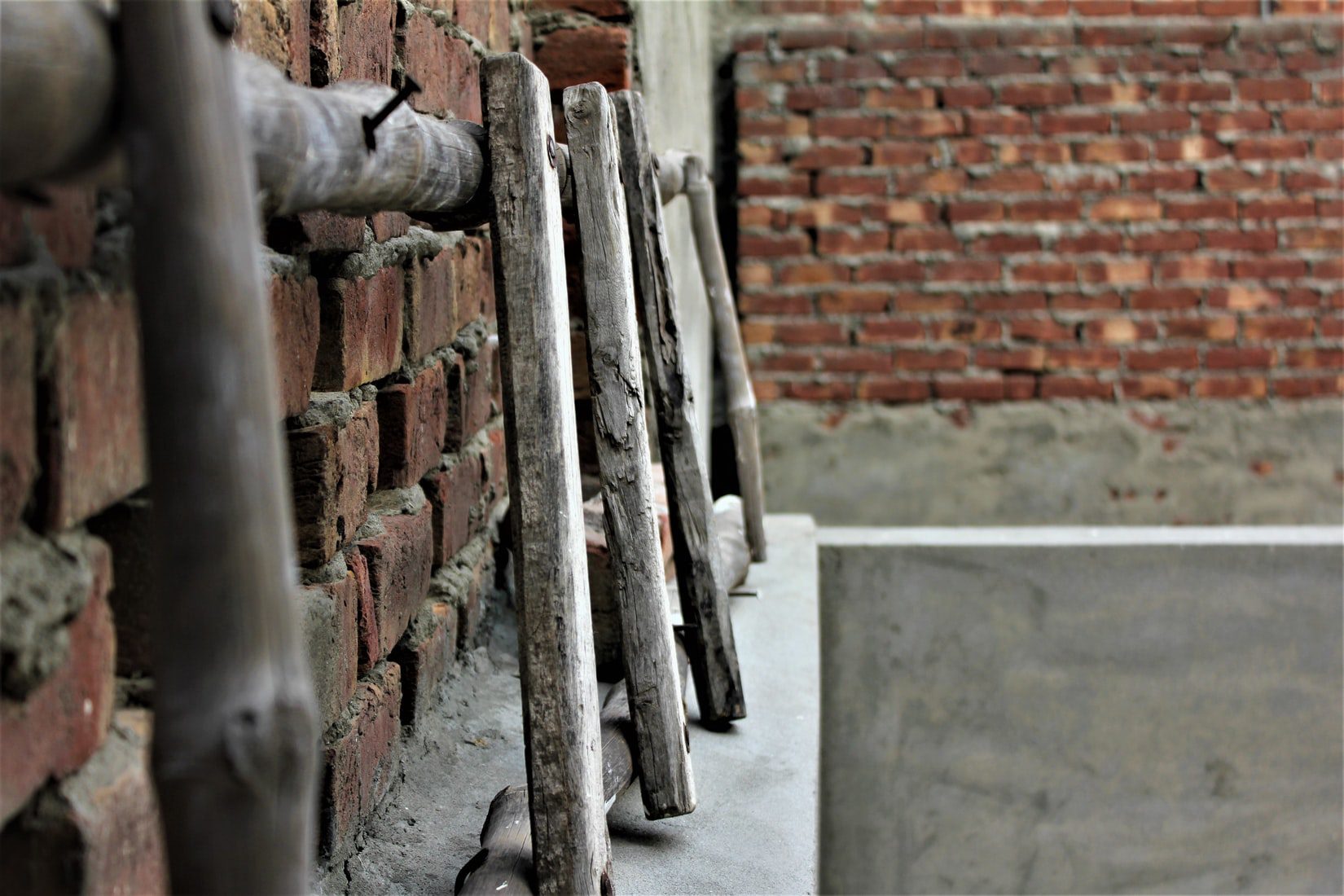Suffering from a damp basement?
A basement is often an underappreciated space in our home that can be used for a variety of purposes. Unfortunately, moisture can sometimes throw a spanner in the works and render this precious space unusable. More than that, not treating a damp basement (correctly) can lead to a lot of negative consequences. Discover the different causes of a damp basement, and read how to definitively make and keep your basement dry.
Free diagnosis
There can be numerous factors at the root of a damp basement. With a thorough moisture analysis, the exact culprit will be found, allowing the ideal solution to be indicated. Could you use such an analysis? Our experts will help you for free and without obligation.
Why do basements suffer from moisture problems more often?
A basement typically suffers from moisture problems much faster or more frequently than any other room within your home. This is mainly due to the basement's underground location; as a result, various sources of moisture easily find their way into the basement:
- Groundwater levels used to be fairly constant, but due to climate change, the soil now experiences more frequent extreme drought or excessive moisture. This leads to variations in pressure on your basement, which can cause cracking (AquaConsult in News Journal).
- In addition, we are increasingly experiencing tremendously high water levels these days. For example, the year 2023 was one of the wettest years ever recorded, and ongoing climate change in 2024 is expected to continue this trend. As a result, groundwater levels in Flanders are increasingly reaching higher heights. This situation can result in basements completely surrounded by groundwater, while the soil between the surface and the groundwater line becomes saturated, allowing moisture to find its way into the basement.
- New construction or changes in the environment, such as building a long driveway or paving a neighbor's front yard, can alter the flow of water and lead to additional water around the basement.
- In addition, moisture has difficulty leaving the basement due to a lack of ventilation. The end result is then a damp basement, which then leads to moisture problems and their adverse consequences.
Houses built before 1990, with brick walls, most often suffer from a damp to wet basement. We would like to emphasize that damp basements are not limited to older homes. Basements in recently built homes can also suffer. Poor ventilation can result in basement moisture even in the most modern homes.
The effects of a damp basement
Basement moisture is always an annoying problem that is best addressed as soon as possible. After all, a damp basement does not come without consequences:
- For example, a damp basement can cause the weakening of your home's materials and construction, compromising the stability of your home.
- All the stuff in your basement will be damaged.
- You may also face additional moisture problems, including rising damp. or mold.
- In addition, a damp basement is pernicious to your health. Mold and high humidity cause a lot of health problems, especially for people who already have underlying respiratory or lung problems.

So to avoid these negative consequences, it is appropriate to waterproof your damp basement. A damp benefit: you can expand the space where you can live in your home. Something that also increases the value of your home.
Want to address basement moisture? Then first and foremost you need to know the cause.
The various causes of a damp basement
A damp basement can be caused by many factors. Each cause has its own method of control, making it very important to get a correct diagnosis.
In general, we can distinguish two categories of causes: moisture problems caused by infiltration and moisture problems that did not involve infiltration.
1. Causes by infiltration
Are you also suffering from water in your basement? If so, chances are you are dealing with infiltrating moisture. With infiltration, there are three major and common diagnoses to make.
1a Permeable moisture
Permeable moisture is a moisture problem that is above ground. The problem there lies with the outer walls of the house. These are no longer able to keep the moisture out at that time. For example, a wall can suffer badly if it rains a lot for a while. Most of the moisture is then in the outer walls, but sometimes it can be so severe that the moisture penetrates into the inner walls.
Permeable moisture can be especially dangerous in the winter. At temperatures below zero, the penetrating moisture freezes in the walls of the house, which can cause cracks in those walls.
1b Groundwater
Because a basement is located underground, this space is literally surrounded by moisture, namely groundwater. The ground contains a lot of moisture, especially if you live in an area where it rains a lot. Due to a poor foundation or cracks in the walls, groundwater can easily enter the basement. Specifically, the basement floor and/or perimeter wall will allow moisture to pass through due to the pressure of groundwater. Sometimes it is so bad that your basement is literally flooded, or the moisture creeps up through the walls.
1c Bagged or seeping water
The name kind of says it all: water sinking down into the walls. When a large amount of precipitation has fallen, the water looks for a way down. When the ground is oversaturated, the water looks for another way. Sometimes that's the walls of your home and, more specifically, your basement.
2. Causes without infiltration
Moisture problems can also occur without infiltration. There is one common example of this.
2a Leaking pipes
A leak in the water pipes or drains is a common cause that leads to moisture in your basement. With a leak, water penetrates the basement through the walls. Virtually every basement is surrounded by pipes and sewer pipes. As a result, even small leaks, if left undetected, can cause significant moisture damage over time.
2b Condensation
In condensation, warm air settles on a cold surface, where it condenses. To combat condensation moisture, it is important to adequately ventilate your rooms. This is often not possible in basements, causing excessive humidity. This then causes all kinds of problems, including for your health.
It is not always easy to pinpoint the exact cause of a damp basement. Sometimes, even multiple factors can contribute to the occurrence of a wet basement. Therefore, we recommend seeking professional advice from a moisture expert. That way, you will be assured of the most appropriate solution to the problem.

Moisture control in the basement
Getting your basement dry (or having it dry) is a good idea and can be done in several ways. Usually it is best to follow the following steps:
Step 1: Find out the cause of the moisture problem
As mentioned above, every moisture problem needs its own solutions. Therefore, it is important to always have an expert look at the moisture in the basement. This expert can determine with certainty the cause of the damp basement, and this person will also inform you about the appropriate solution for your situation.
Step 2: Apply the most appropriate solution
After determining the cause, you can get to work on the most appropriate control method. We list the solutions most commonly employed.

1. Basement drainage
In a basement drainage, a moisture expert will install a type of bubble membrane. This membrane causes the water in the basement to be collected through a variety of small channels to a single drain. The water is then pumped away by means of an automatic water pump. To finish everything off nicely, the moisture specialist applies a layer of concrete above the membrane. Because the groundwater is neatly drained under this new layer, basement drainage is an invisible but durable solution.
UNIQUE AT AEROCONSULT! At AeroConsult, we offer a unique alternative to basement drainage. Instead of pouring a new layer of concrete over the bubble wrap, certified ceramic tiles can be installed. This pairs the practical with the pleasant, as your basement is immediately tiled.
2. Basement sealing
Basement waterproofing or caulking involves partially trimming the basement walls and floor and treating them again with waterproof cement layers, using different materials and in different stages. These layers ensure that your basement becomes completely waterproof. Again, it is possible to choose ceramic tiles as a finish.
3. Injecting walls
When you have your walls injected, holes are made in the walls just above ground level. A moisture-resistant gel is then injected into them. As the gel cures, a barrier to rising groundwater forms.
4. Solving leaks
This solution speaks for itself, and is somewhat less invasive than the previous moisture solutions. When basement moisture is caused by leaks, it is wise to address them immediately. For burst pipes, it is recommended to consult a specialist, as a lot can go wrong if you attempt to do it yourself.
5. Basement ventilation
Finally, it is very important to properly ventilate your basement. Ventilation is a very durable and sufficient solution to specific moisture problems, especially when it comes to issues such as condensation moisture.

Keeping your basement dry for good: ventilation
Suppose you suffered from moisture in your basement in the past, you had a moisture expert determine and apply the appropriate solution, but the problem has returned. In many cases, this is not because a mistake happened, but a lack of ventilation causes the moisture to return. So, if you want to be permanently rid of a damp basement, it is imperative that you provide adequate ventilation. Natural ventilation is almost impossible in a basement, so we hook up mechanical ventilation. Before you know it, the moisture problem is solved.
Are you suffering from moisture in the basement yourself? Then contact Aquaconsult and our specialists will come by for a free moisture expertise; anywhere in Flanders.
Request more information and brochure
Answer the questions below and get more information and our brochure.
Read also: Moist crawl space: causes and solutions



